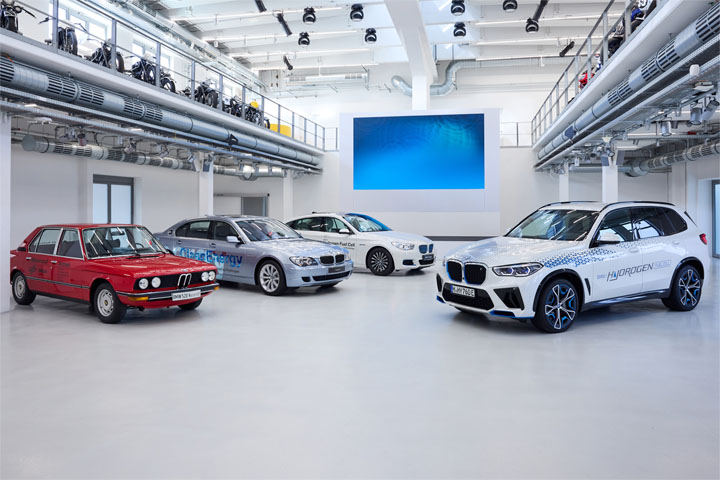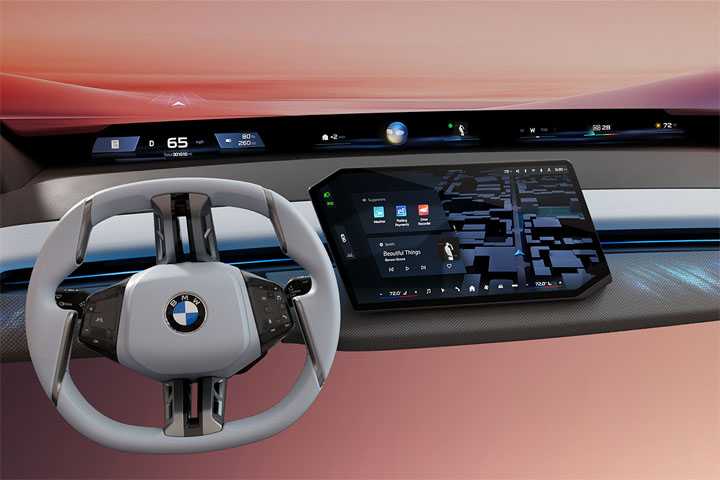In an interview with the BMW Group Media House, Pieter Nota, Member of the Board of Management of BMW AG for Customer, Brands, Sales talks about the advantages of the plug-in hybrid, the technology’s future and about what he expects from legislators. Because he is sure: “Our plug-in hybrids combine the best of two worlds.”
Mr. Nota, as the Member of the Board who oversees sales, you are very close to the customer. What can customers expect from BMW these days when it comes to sheer driving pleasure?
Our customers want what makes a typical BMW, not only in terms of design, but also the precision in agility and driving performance that they expect from the brand. And that is what they get from us. Every BMW is a true BMW – with a wide range of drive technologies. These fit the very different individual needs of our customers in terms of mobility. They depend, for example, on whether they live in the city or in the country, and also on regional conditions, such as charging infrastructure or emissions laws. We do not believe in the one technology that meets all these different mobility requirements. Rather, we want to give our customers the choice of what brings them sheer driving pleasure. For us, this is the power of choice – not only when it comes to selecting the model that best suits our customers, but also which drive system is the most suitable for them. One of these is the plug-in hybrid, which combines the advantages of the electric drive with the long-distance capability of a combustion engine.
For which customers does a plug-in hybrid vehicle make sense?
A plug-in hybrid vehicle combines the best of two worlds. On the one hand, in electric driving mode you drive completely emission-free and very quiet in the city. On the other, the internal combustion engine offers its full potential on long distances. So together, the two engines provide an optimal mix of efficiency, dynamics and comfort. For example, a hybrid vehicle is particularly useful for customers who commute to work using only electricity, but also occasionally cover long distances and who may only have one vehicle in the household. Provided that they regularly charge at home or work, they will also find this option cheaper than a conventional drive.
A common criticism is that a plug-in hybrid is far from being as clean as a comparable combustion engine.
That is simply not true. In general, the average fuel consumption that can be achieved with a plug-in hybrid vehicle is also significantly lower in practice than with comparable conventional drives. However, if the electric drive is hardly ever used, this efficiency advantage over the combustion engine is lost. A plug-in hybrid therefore makes most sense when it is regularly charged and driven in electric mode. The fuel efficiency of these vehicles therefore depends largely on the driving and usage behaviour of our customers. From personal experience, I can say that with my BMW 745Le* I achieve really low fuel consumption, with an average of around two litres. In commuter traffic, I drive up to 70% in pure electric mode and can easily recharge the vehicle when I am at the office

But customers probably choose a plug-in hybrid mainly because of the tax savings and less because they want to drive electrically, don’t they?
No, that is not correct - let me make it very clear: Many customers today are buying an electrified vehicle for the first time. They first have to experience this technology and all of its advantages. Only then do they know how much electric range they actually need or how often or where they charge best. I have spoken to many customers who are absolutely convinced of the plug-in hybrid, precisely because it is optimally designed for their very different mobility requirements.
So what is the BMW Group doing to encourage customers to drive their plug-in hybrids more in electric mode instead of using the combustion engine?
In our latest plug-in hybrid models, for example, we use eDrive Zones Geo-Fencing technology that automatically recognises environmental zones. When entering such a zone, the vehicle automatically switches to purely electric driving mode. This helps to optimally utilise the potential of hybrid vehicles and reduce emissions. It is also even more advantageous for the user, since the electric drive system fully utilises its consumption advantages in the city. In addition, we will soon be focusing on the sporting ambitions of drivers of BMW plug-in hybrid vehicles with a loyalty program. They will receive points for every kilometre driven electrically and also for charging the high-voltage battery, which they can then exchange for rewards. We also show how the billing of privately charged traction current can be more convenient for company car users.
What is the BMW Group’s outlook for the future of plug-in hybrid vehicles?
In the EU alone, there are millions of people whose mobility behaviour is ideally suited to a plug-in hybrid vehicle. We are therefore consistently expanding our range of plug-in hybrids. The new BMW 5 Series, for example, which we have just launched, will initially offer five different hybrid variants. In addition, we are of course continuing to develop the drive system and will offer up to 100 kilometres of electric range in the future, depending on the segment. By the end of this year, we will already have a total of 12 basic plug-in hybrid models available, including the new MINI Countryman* and the BMW X2*. Incidentally, we already lead in terms of the breadth of the model range, both in Germany and in the EU, but also worldwide. At this point, I would like to talk about our entire range of electrified vehicles. By 2023, we aim to have a total of 25 electrified models on the road. More than half of them will be fully electric. All in all, we assume that electrified vehicles will account for between 15 and 25% of our global sales before 2025. In Europe, it will probably already be a quarter by 2021, a third by 2025 and half by 2030. This also puts us on track to meet the EU's CO2 targets. For us, the issue of climate protection is of central importance, as well as keeping our promise when it comes to political policies.
You mention politics. What do you expect from legislators when it comes to electric mobility?
We believe that the expansion of the charging infrastructure plays a key role in customer acceptance and the ramp-up of electric mobility. With our 360-degree approach, which we have been pursuing since 2013, we want to create the best charging options for our customers at home, at work and in public. We are continuing to work on this together with our partners on a large number of projects. Of course, we are also politically active and support initiatives to expand the public charging structure. Here we are particularly engaged in dialogue with cities that are committed to e-mobility in order to make them more liveable through better air quality and less traffic noise. Beyond charging, we believe that appropriate regulatory incentive systems, such as eZones or charging tariffs, will also make electric driving more attractive. We expect that the share of electric driving will increase further as the promotion of electric vehicle use is expanded. As a result, electric driving will become more widespread.
Electric mobility has changed your company, but also the demands on your employees?
The ramp-up of e-mobility is bringing about changes in very different areas – from vehicle development to sales. In production, for example, intelligent vehicle architectures will enable us to produce the same model with various drivetrains on a single line: fully electric, plug-in hybrid and conventional. This makes us extremely flexible. Of course, this also requires our employees to adapt. That’s why we have geared our training and further education toward this topic. For example, we have already trained over 46,000 employees in the field of e-mobility. That’s more than a third of our team. In-person trainings in the field of electromobility have recently started again. This shows the importance of this topic even during the Covid-19 pandemic. For example, “Blitz” training courses on the safe handling of high-voltage systems are absolutely essential for worldwide production and ramp-ups in our plants, as well as for our dealerships, where over 33,000 “Blitz” training courses have already been held.
*Consumption and emission data:
BMW 745Le Sedan: fuel consumption combined: 2.3-2.2 l/100 km; power consumption combined: 15.7-15.6 kWh/100 km, CO2 emissions combined: 45-40 g/km
MINI Cooper S E Countryman ALL4: Kraftstoffverbrauch kombiniert: 2,0-1,7 l/100 km, Stromverbrauch kombiniert: 14,0-13,1 kWh/100 km, CO2-Emissionen kombiniert: 45-40 g/km
BMW X2 xDrive25e: fuel consumption combined: 1.9 l/100 km; power consumption combined: 13.7 kWh/100 km; CO2 emissions combined: 43 g/km






